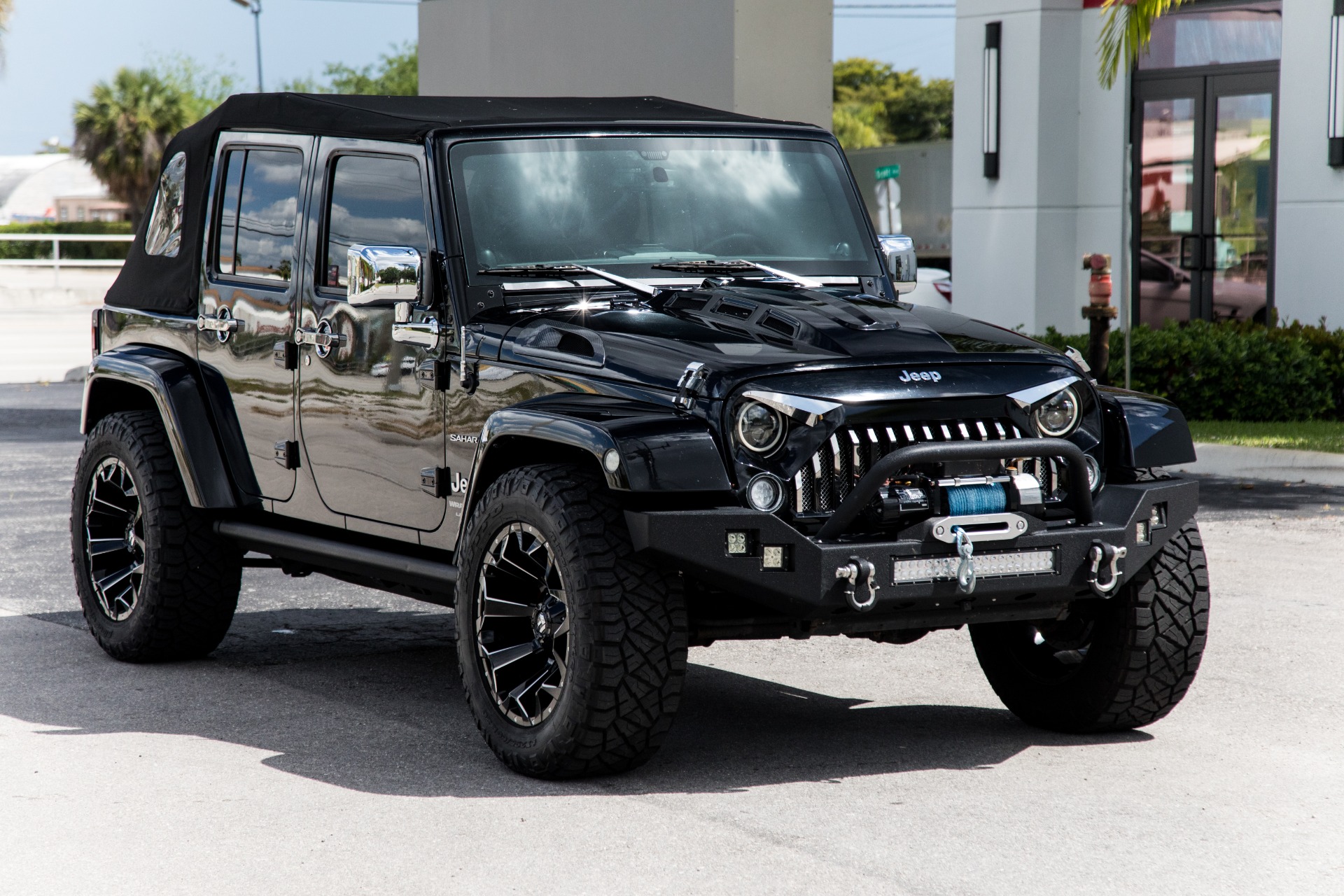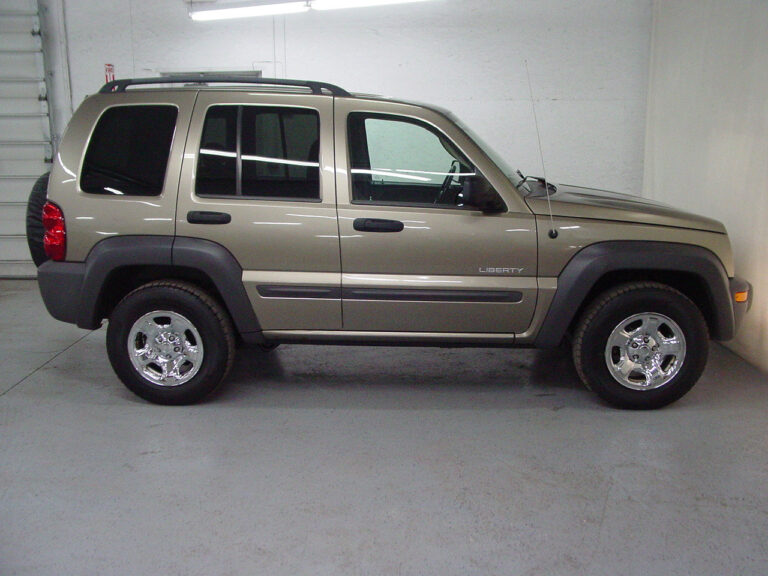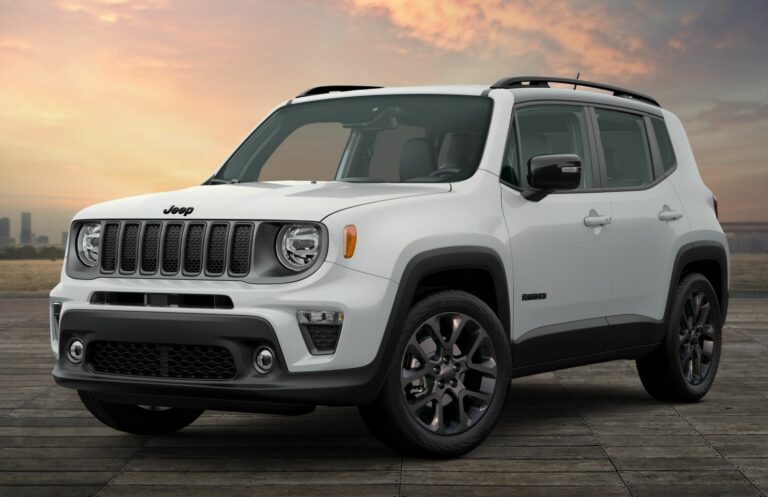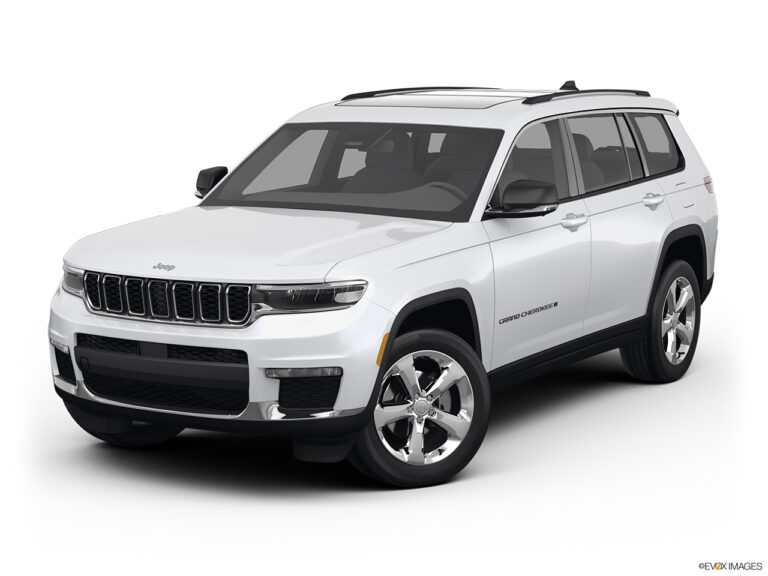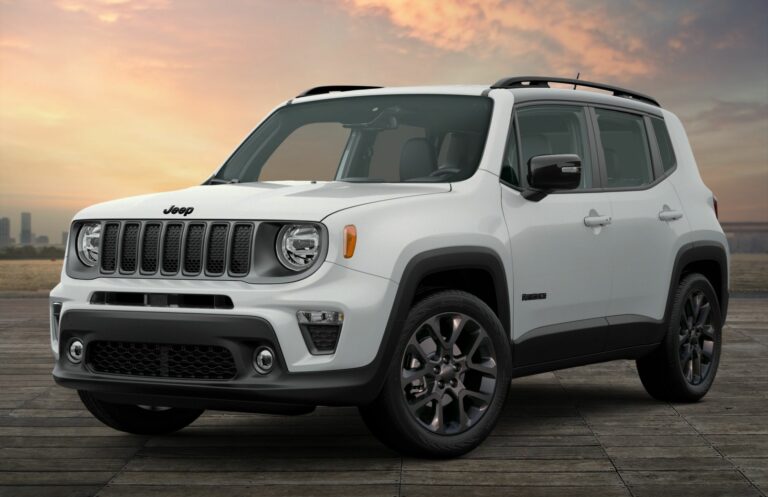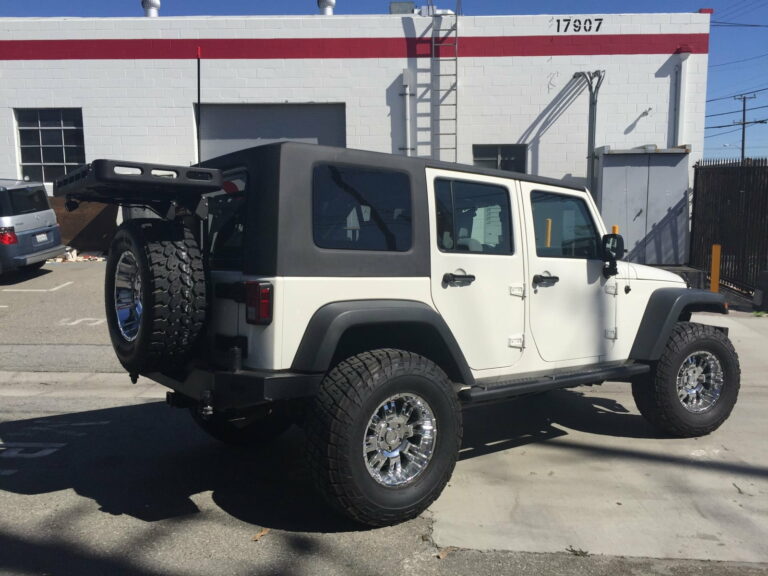Wrangler Jeep Cost: A Comprehensive Guide to Owning the Iconic Off-Roader
Wrangler Jeep Cost: A Comprehensive Guide to Owning the Iconic Off-Roader jeeps.truckstrend.com
The Jeep Wrangler stands as an undeniable icon in the automotive world, synonymous with adventure, freedom, and unparalleled off-road capability. Its distinctive design and rugged performance have captivated enthusiasts for decades. However, for many prospective owners, the allure of the Wrangler comes with a fundamental question: "What is the true Wrangler Jeep Cost?"
Understanding the cost of a Jeep Wrangler extends far beyond its initial purchase price. It encompasses a multifaceted financial landscape that includes not only the sticker price but also ongoing ownership expenses, potential customization costs, and even the nuances of depreciation. This comprehensive guide aims to demystify the total financial commitment involved in owning a Jeep Wrangler, providing a detailed breakdown of every significant cost factor. By exploring these elements, we hope to equip you with the knowledge needed to make an informed decision and budget effectively for your very own piece of automotive legend.
Wrangler Jeep Cost: A Comprehensive Guide to Owning the Iconic Off-Roader
I. The Initial Investment: Understanding the MSRP
The Manufacturer’s Suggested Retail Price (MSRP) is the starting point for any vehicle purchase, but for the Jeep Wrangler, it represents a wide spectrum depending on the trim level, body style, engine choice, and optional features.
Base Models vs. Higher Trims:
The Wrangler lineup typically begins with the Sport trim, which offers the most accessible entry point. As you ascend through the ranks to trims like Willys, Sahara, Rubicon, and the premium High Altitude or performance-oriented Rubicon 392, the MSRP significantly increases. Each step up typically adds more advanced off-road features, luxurious interior appointments, enhanced technology, or more powerful powertrains.
2-Door vs. 4-Door (Unlimited):
A fundamental cost differentiator is the body style. The classic 2-door Wrangler is generally less expensive than its 4-door Unlimited counterpart. While the 2-door offers superior break-over angles for serious off-roading and a more traditional aesthetic, the 4-door provides significantly more passenger and cargo space, making it a more practical choice for families or those needing greater utility. Expect the Unlimited models to command a premium of several thousand dollars over their 2-door equivalents.
Engine Options and Their Cost Implications:![]()
Jeep offers a variety of powertrains, each with its own cost structure and performance characteristics:
- 3.6L Pentastar V6: The venerable standard engine, known for its reliability and balanced performance. It’s typically the most cost-effective option.
- 2.0L Turbo I4: Often an upgrade, this engine provides more torque lower in the RPM range, making it feel punchier, especially at highway speeds. It also offers slightly better fuel economy than the V6. Its cost is usually a few thousand dollars more than the base V6.
- 2.0L Turbo 4xe (Plug-in Hybrid): The most significant leap in initial cost, the 4xe models are considerably more expensive due to their advanced hybrid technology. However, they may qualify for federal tax credits (check current eligibility) and offer substantial fuel savings.
- 6.4L HEMI V8 (Rubicon 392): This high-performance engine is reserved for the top-tier Rubicon 392, which carries a premium price tag often double that of a base Sport. It offers exhilarating power but comes with a hefty initial investment and higher running costs.
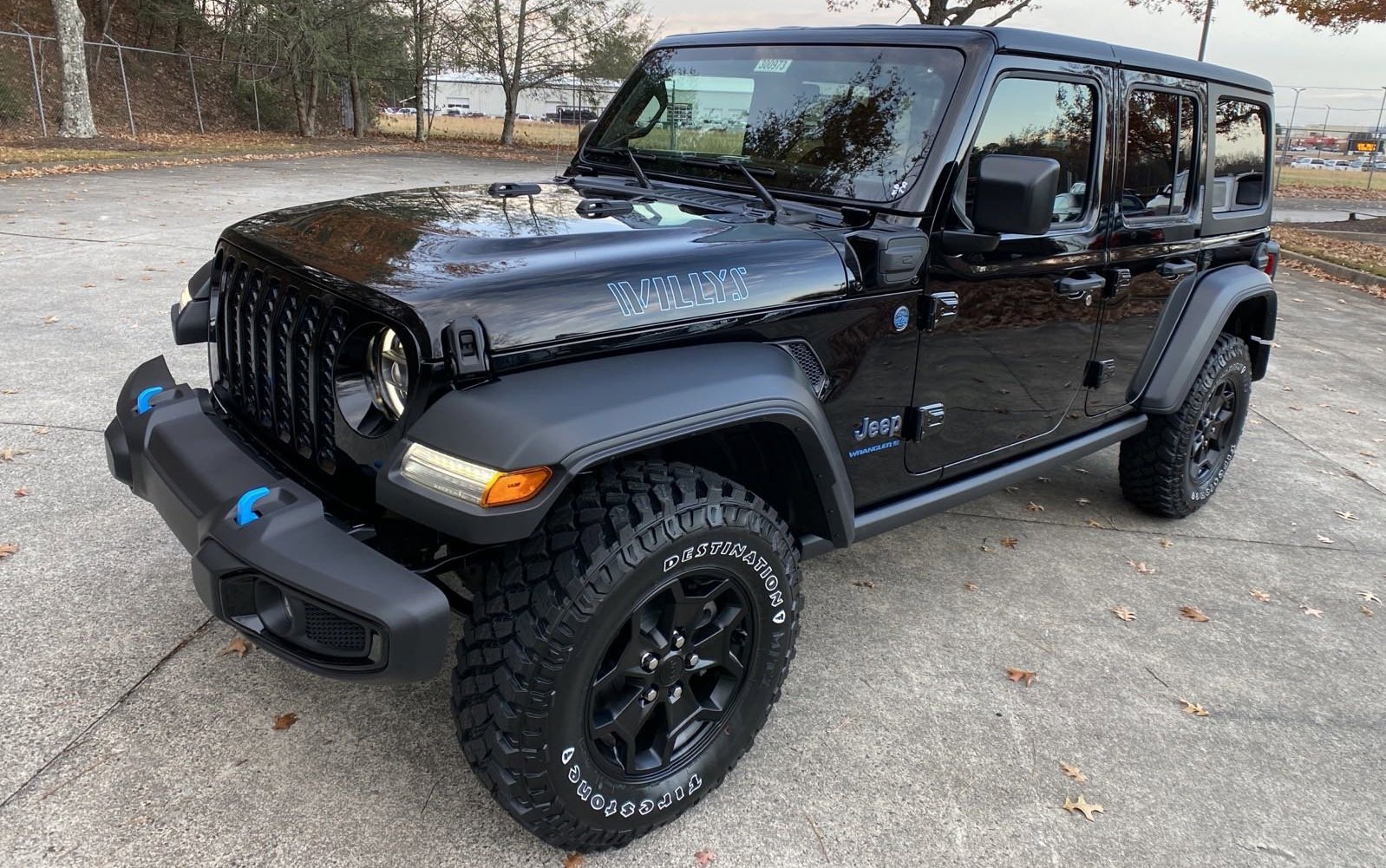
Transmission Choices:
While most Wranglers come with an 8-speed automatic transmission, a 6-speed manual transmission is still available on some lower trims. The manual option is usually a no-cost or very low-cost choice, appealing to purists and those looking to shave a few dollars off the MSRP.
Standard Features vs. Optional Packages:
Beyond the trim level, numerous optional packages and standalone features can quickly inflate the price. These can include:
- Advanced Safety Group: Blind-spot monitoring, rear cross-path detection.
- Technology Group: Larger infotainment screen, premium audio.
- Cold Weather Group: Heated seats, heated steering wheel, remote start.
- Trailer-Tow and Heavy-Duty Electrical Group: Enhanced cooling, auxiliary switches.
- Premium Soft Top or Hard Top options: The modular nature of the Wrangler allows for various roof choices, each with a different price point.
- Special paint colors, wheel upgrades, Mopar accessories.
Destination Charge:
Always factor in the destination charge (also known as freight or delivery charge), which is a non-negotiable fee added to the MSRP to cover the cost of transporting the vehicle from the factory to the dealership. This fee is standard across all models and is typically around $1,895 (as of recent models).
II. Beyond the Sticker Price: Hidden Costs and Fees
The MSRP is just the beginning. Several additional costs and fees will be added to the purchase price before you drive off the lot.
Sales Tax:
This is perhaps the largest "hidden" cost and varies significantly by state and even county. Sales tax is calculated as a percentage of the vehicle’s purchase price and can add thousands of dollars to the total. For example, a $40,000 Wrangler in a state with 7% sales tax will incur an additional $2,800.
Registration and Titling Fees:
Every new vehicle needs to be registered with the Department of Motor Vehicles (DMV) and have a title issued. These fees vary by state and can range from a few hundred dollars to over a thousand, often based on the vehicle’s value or weight.
Documentation Fees (Doc Fees):
Dealerships charge a "doc fee" for processing paperwork, submitting registration, and ensuring all legal requirements are met. These fees are regulated in some states but can be highly variable in others, ranging from under $100 to over $1,000. While often negotiable, they are a standard part of the transaction.
Dealership Add-ons:
Be wary of optional dealership add-ons that can inflate the price. These might include:
- Paint Protection/Fabric Protection: Often overpriced and can be done cheaper elsewhere.
- Extended Warranties: While some extended warranties can offer peace of mind, dealership-offered ones are often marked up significantly. Research third-party options or negotiate the price aggressively.
- Nitrogen-filled Tires: A minor benefit, but often charged excessively.
- VIN Etching: A theft deterrent, but again, often overpriced.
Always scrutinize these line items and don’t hesitate to decline them if they don’t offer clear value.
Financing Costs:
If you’re not paying cash, the cost of financing is a major consideration. This includes:
- Interest Rates: Your credit score, loan term, and current market rates will determine your interest rate. Even a small percentage difference can add thousands to the total cost over a 5-7 year loan term.
- Loan Terms: Longer loan terms (e.g., 72 or 84 months) result in lower monthly payments but accumulate more interest over the life of the loan. Shorter terms (e.g., 36 or 48 months) save on interest but have higher monthly payments.
III. The Long Haul: Ownership Costs Over Time
Once the initial purchase is complete, the true cost of Wrangler ownership begins with ongoing expenses.
Insurance:
Jeep Wranglers often have higher insurance premiums compared to many other vehicles. Several factors contribute to this:
- Higher Theft Rates: Their popularity makes them a target.
- Parts Cost: Unique parts and specialized repair shops can lead to higher repair costs after an accident.
- Off-Road Use: While insurance typically covers on-road incidents, if an insurer believes the vehicle is more prone to off-road damage, it can influence rates.
- Driver Demographics: Younger drivers, often drawn to Wranglers, may face higher rates.
Premiums vary widely based on your location, driving record, coverage limits, deductible, and the specific Wrangler model (e.g., a Rubicon 392 will be more expensive to insure than a Sport). Expect to pay anywhere from $1,500 to $3,000+ per year for full coverage.
Fuel Economy:
The Wrangler is not known for its fuel efficiency, especially the V6 and V8 models.
- 3.6L Pentastar V6: Typically averages 17-20 MPG combined.
- 2.0L Turbo I4: Slightly better, often 21-23 MPG combined.
- 2.0L Turbo 4xe (PHEV): Offers 49 MPGe (miles per gallon equivalent) when running on electricity and gasoline, and around 20 MPG on gasoline alone after the battery is depleted. This can significantly reduce fuel costs if regularly charged.
- 6.4L HEMI V8 (Rubicon 392): The thirstiest, often getting 13-14 MPG combined.
Fuel costs will be a significant ongoing expense, particularly for higher-mileage drivers or those with the less efficient engines. Off-roading and large tires will further reduce efficiency.
Maintenance:
Routine maintenance is crucial for the longevity and reliability of any vehicle. Wrangler maintenance costs are generally comparable to other SUVs but can increase with off-road use.
- Oil Changes: Typically every 7,500-10,000 miles, costing $60-$120.
- Tire Rotations: Every 5,000-7,500 miles, often free with tire purchase or $20-$40.
- Fluid Checks/Changes: Transmission fluid, differential fluid (especially important for off-roaders), coolant. These can range from $100-$300+.
- Brake Service: Pads and rotors typically every 30,000-60,000 miles, costing $300-$600 per axle.
- Spark Plugs: Every 100,000 miles, around $200-$400.
Impact of Off-Roading: Aggressive off-roading can accelerate wear and tear on suspension components, differentials, axles, and tires, leading to more frequent and costly maintenance.
Repairs:
While modern Wranglers are generally reliable, like any vehicle, they can incur repair costs. Common potential issues can include minor electrical glitches, suspension wear (especially if modified), and occasional fluid leaks. Parts for Wranglers are widely available, both OEM and aftermarket, which can help manage repair costs. Expect to budget $500-$1,000 per year for potential unexpected repairs, especially as the vehicle ages.
Tires:
Wrangler tires, particularly the larger, more aggressive off-road tires found on Rubicon models or chosen as aftermarket upgrades, can be expensive. A set of four quality all-terrain or mud-terrain tires can easily cost $800-$1,500+, and they may wear faster than standard road tires, especially with heavy off-road use or incorrect tire pressure/alignment.
Depreciation:
Jeep Wranglers are renowned for holding their value exceptionally well, often better than many competitors. This means that while the initial purchase price might be high, you can expect to recoup a significant portion of it when you sell or trade-in. However, depreciation still occurs, and the most significant drop is usually in the first 1-3 years. Models with desirable features, lower mileage, and a clean history tend to depreciate less.
IV. The Customization Factor: Where the Costs Skyrocket (or not)
A significant aspect of Wrangler ownership is the vast ecosystem of aftermarket parts and accessories. Many owners view their Wrangler as a blank canvas, leading to substantial additional investment.
Why People Customize:
- Enhanced Off-Road Capability: Lift kits, larger tires, lockers, armor.
- Personalization: Unique bumpers, lighting, exterior accents.
- Utility: Roof racks, cargo solutions, winches.
- Performance: Engine tunes, exhaust systems.
Common Modifications and Cost Ranges:
- Lift Kits: From basic spacer lifts ($200-$500) to full suspension replacements ($1,000-$5,000+). Installation adds another $500-$1,500.
- Larger Tires & Wheels: Beyond stock, a set can range from $1,500-$4,000+.
- Aftermarket Bumpers: Steel front and rear bumpers for off-road protection or aesthetics can cost $500-$2,000 each.
- Winch: Essential for serious off-roading, a good winch costs $400-$1,500.
- Auxiliary Lighting: Light bars, fog lights, rock lights can add $100-$1,000+.
- Roof Racks: For carrying extra gear or tents, $300-$1,500+.
- Interior Upgrades: Seat covers, floor mats, storage solutions, infotainment upgrades ($100-$1,000+).
Impact on Warranty, Insurance, and Fuel Economy:
- Warranty: Major modifications (e.g., non-Mopar lift kits, engine tunes) can void portions of your factory warranty. Always check with Jeep or your dealership.
- Insurance: Inform your insurer about significant modifications, as they may increase the vehicle’s value and thus your premium.
- Fuel Economy: Larger, heavier tires and lift kits significantly increase drag and rolling resistance, leading to a noticeable drop in MPG.
DIY vs. Professional Installation:
Many modifications can be a DIY project for the mechanically inclined, saving substantial labor costs. However, complex installations (like re-gearing axles or major suspension work) are best left to professionals to ensure safety and proper functionality.
V. Smart Strategies for Managing Wrangler Jeep Cost
Owning a Wrangler doesn’t have to break the bank. Smart planning and savvy decisions can help manage the overall cost.
Buying New vs. Used:
- New: Full warranty, latest features, ability to customize from the factory. Higher initial depreciation hit.
- Used: Significant savings on the initial purchase due to depreciation. However, careful inspection is needed, and factory warranty may be limited or expired. Wranglers hold value well, so used prices can still be robust. Consider certified pre-owned (CPO) for added peace of mind.
Negotiation Tips:
- Research: Know the invoice price and typical selling prices in your area.
- Shop Around: Get quotes from multiple dealerships.
- Focus on Out-the-Door Price: Don’t just negotiate the MSRP; ensure you’re happy with the total price including all fees.
- Separate Trade-in: Negotiate the new car price first, then discuss your trade-in value.
- Decline Unnecessary Add-ons: Be firm about not paying for overpriced dealership extras.
Leasing vs. Buying:
- Leasing: Lower monthly payments, drive a new vehicle every few years, no long-term maintenance worries (under warranty). However, you don’t own the vehicle, mileage limits apply, and customization is often restricted. Good for those who like frequent upgrades.
- Buying: You own the asset, no mileage limits, full freedom to customize. Higher monthly payments initially, but eventually, you’re payment-free. Better for long-term ownership and off-road enthusiasts.
Budgeting for Ownership:
Create a monthly or annual budget that includes:
- Loan payments
- Insurance premiums
- Estimated fuel costs
- A contingency fund for maintenance and unexpected repairs ($50-$100/month is a good starting point).
- A separate fund for desired modifications.
DIY Maintenance:
For simple tasks like oil changes, air filter replacements, or even some minor accessory installations, doing it yourself can save significant labor costs. Invest in a good service manual and basic tools.
Shopping for Insurance:
Always get quotes from multiple insurance providers. Rates can vary by hundreds of dollars for the same coverage. Mention any safety features your Wrangler has (e.g., advanced safety group) as they might qualify for discounts.
Fuel Efficiency Tips:
- Maintain Proper Tire Pressure: Under-inflated tires reduce MPG.
- Avoid Aggressive Driving: Smooth acceleration and braking improve efficiency.
- Remove Unnecessary Weight: Don’t carry heavy gear you don’t need.
- Consider a 4xe: If fuel economy is a top priority and your driving habits align with plug-in hybrid benefits.
VI. Special Editions and Performance Models: The Premium Tier
The Wrangler lineup includes several specialized trims that come with a higher price tag due to their unique features and enhanced capabilities.
- Rubicon: The quintessential off-roader, equipped with heavy-duty Dana 44 axles, electronic locking differentials, electronic sway bar disconnect, and larger off-road tires. These features significantly increase its initial cost but provide unmatched trail performance.
- Sahara: Blends off-road capability with more on-road comfort and luxury features, often including body-color fender flares, premium interiors, and advanced tech. It sits at a higher price point than the Sport or Willys.
- Willys: A nod to the original military Jeeps, offering a balance of capability and retro styling. It typically bridges the gap between the Sport and Rubicon in terms of features and price.
- High Altitude: The most luxurious trim, featuring premium materials, larger wheels, and advanced technology. It commands a significant premium, targeting those who want refinement with their ruggedness.
- 4xe (Plug-in Hybrid): As discussed, the 4xe models are inherently more expensive due to their advanced powertrain but offer potential long-term fuel savings and environmental benefits.
- Rubicon 392: The pinnacle of Wrangler performance, featuring a powerful 6.4L HEMI V8 engine. Its cost is substantially higher than any other Wrangler, positioning it as a niche, high-performance luxury off-roader.
These models cater to specific buyers and their higher price points reflect the specialized engineering, upgraded components, and exclusive features they offer.
Wrangler Jeep Cost: Estimated Price Table (2024 Models)
This table provides estimated starting MSRPs and typical ownership costs. Actual prices and costs will vary based on location, options, market conditions, and individual factors.
| Model/Trim (4-Door Unlimited) | Starting MSRP (Est.) | Key Features (Highlights) | Typical Fuel Economy (MPG/MPGe) | Est. Annual Insurance* | Est. Annual Maintenance* |
|---|---|---|---|---|---|
| Sport S | $40,000 | Basic off-road capability, manual/auto options, 2.0L/3.6L | 19-21 MPG (Gas) | $1,500 – $2,500 | $400 – $700 |
| Willys | $44,000 | 33-inch tires, locking rear diff, rock rails, Rubicon shocks | 19-21 MPG (Gas) | $1,600 – $2,600 | $400 – $700 |
| Sahara | $49,000 | Body-color fenders, premium interior, Uconnect 5, LED lights | 19-21 MPG (Gas) | $1,700 – $2,700 | $400 – $700 |
| Rubicon | $52,000 | Electronic locking diffs, sway bar disconnect, 33-inch tires | 19-21 MPG (Gas) | $1,800 – $2,900 | $500 – $800 |
| Sahara 4xe | $55,000 | Plug-in Hybrid, EV range, Uconnect 5, premium features | 49 MPGe / 20 MPG (Gas) | $1,900 – $3,000 | $450 – $750 |
| Rubicon 4xe | $61,000 | Plug-in Hybrid, EV range, Rubicon off-road features | 49 MPGe / 20 MPG (Gas) | $2,000 – $3,200 | $450 – $750 |
| Rubicon 392 | $90,000 | 6.4L HEMI V8, Fox shocks, Xtreme Recon package | 13-14 MPG (Gas) | $2,500 – $4,000+ | $600 – $1,000+ |
*Disclaimer: All prices and cost estimates are approximate and for illustrative purposes only. Actual costs will vary significantly based on location, dealer, options, market conditions, individual driving habits, insurance provider, and maintenance practices. Tax credits for 4xe models are subject to current federal and state regulations.
Frequently Asked Questions (FAQ) about Wrangler Jeep Cost
Q1: Is a Jeep Wrangler expensive to maintain?
A1: Routine maintenance for a Jeep Wrangler is generally comparable to other SUVs. However, if you frequently off-road, maintenance costs can increase due to accelerated wear on components like suspension, tires, and differentials. Aftermarket modifications can also lead to higher or more specialized repair costs.
Q2: How much does it cost to lift a Jeep Wrangler?
A2: The cost of a lift kit varies widely. A basic spacer lift might cost $200-$500 for parts, while a full suspension replacement with new shocks and springs can range from $1,000-$5,000+. Professional installation typically adds another $500-$1,500 to these costs, plus the cost of larger tires if desired.
Q3: Does a Jeep Wrangler hold its value?
A3: Yes, Jeep Wranglers are famous for their excellent resale value. They consistently rank among the top vehicles for depreciation retention, often holding a significant percentage of their original MSRP even after several years. This strong resale value can offset some of the higher initial costs.
Q4: Is the Wrangler 4xe worth the extra cost?
A4: The Wrangler 4xe has a higher initial purchase price. Whether it’s "worth it" depends on your driving habits and priorities. If you have access to charging, regularly drive short distances where you can maximize electric-only range, and value lower fuel consumption and environmental benefits, the 4xe can offer significant long-term fuel savings and potentially qualify for tax credits, making the higher upfront cost justifiable.
Q5: What’s the cheapest Jeep Wrangler to buy?
A5: The 2-door Jeep Wrangler Sport is typically the least expensive new Wrangler model. It offers the basic Wrangler experience at the most accessible price point, though it lacks many of the features found in higher trims. Used 2-door Sport models will be even more affordable.
Q6: Why are Jeep Wranglers so expensive to insure?
A6: Wranglers often have higher insurance premiums due to several factors: their popularity makes them a target for theft, unique and specialized parts can increase repair costs after an accident, and their rugged image might lead insurers to perceive a higher risk of off-road-related damage. Additionally, their demographic of younger, potentially higher-risk drivers can influence rates.
Conclusion: The Total Value of Wrangler Ownership
The cost of a Jeep Wrangler is undoubtedly a significant investment, extending far beyond the initial sticker price. From sales tax and registration fees to ongoing expenses like insurance, fuel, and maintenance, and the potentially limitless world of aftermarket customization, the financial journey of Wrangler ownership is multi-layered.
However, for many, the cost is a worthwhile trade-off for the unparalleled freedom, adventure, and unique lifestyle that a Wrangler offers. Its iconic status, legendary off-road capability, and remarkable ability to hold its value make it a distinct proposition in the automotive market. By understanding and budgeting for all facets of Wrangler Jeep Cost, prospective owners can approach their purchase with confidence, ensuring that the dream of owning this legendary vehicle becomes a sustainable and enjoyable reality. Responsible planning allows you to not just buy a vehicle, but to invest in a lifestyle, ensuring countless miles of adventure and memories.
